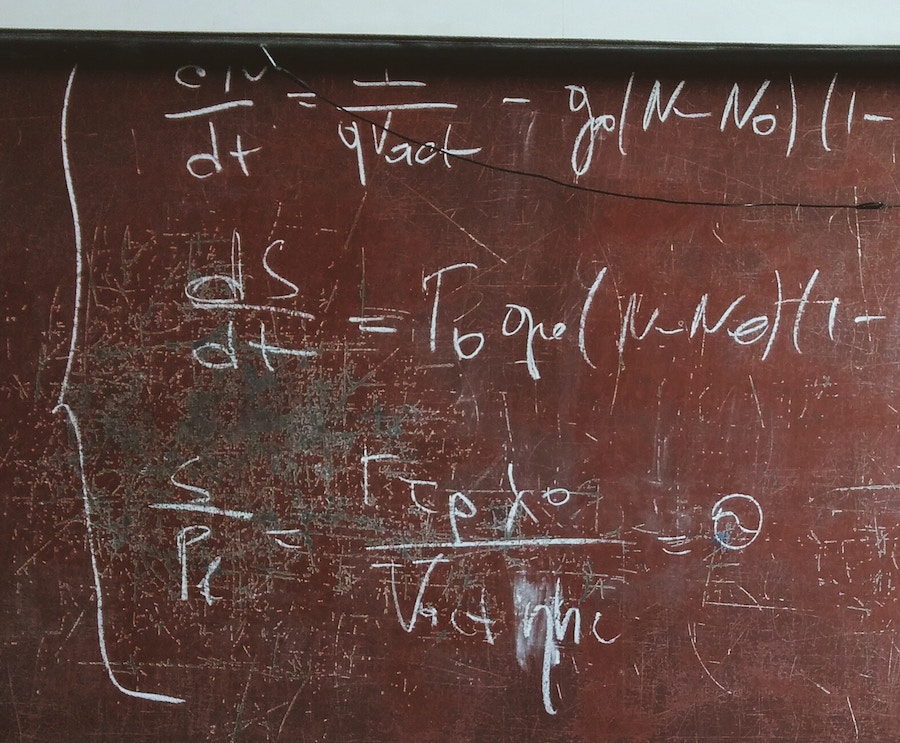We're going to take a look at an alternative way to define a Zipper
Comonad over a data type. Typically one would define a Zipper Comonad by
defining a new datatype which represents the Zipper; then implementing
duplicate and extract for it.
extract is typically straightforward to write, but I've had
some serious trouble writing duplicate for some more
complex data-types like trees.
We're looking at a different way of building a zipper, The advantages of this method are that we can build it up out of smaller instances piece by piece. Each piece is a easier to write, and we also gain several utility functions from the Typeclasses we'll be implementing along the way! It's not terribly practical, but it's a fun experiment.
You can find this post as a literate haskell file here so that means you can load it up directly in GHC and play around with it if you want to follow along! Let's get started.
First we'll need a few language extensions, In case you're wondering;
TypeFamilies is used by the Representable.
{-# language DeriveFunctor #-}
{-# language TypeFamilies #-}
{-# language InstanceSigs #-}We're going to be writing a Zipper into a list. In case you're unfamiliar, a zipper is essentially a 'view' into a structure which is focused on a single element. We'll call our focused view into a list a 'Tape'
module Tape whereGo ahead and import everything we'll need:
-- http://hackage.haskell.org/package/comonad-5/docs/Control-Comonad.html#t:Comonad
import Control.Comonad
-- http://hackage.haskell.org/package/free-4.12.4/docs/Control-Comonad-Cofree.html
import Control.Comonad.Cofree
-- https://hackage.haskell.org/package/distributive-0.5.0.2/docs/Data-Distributive.html#t:Distributive
import Data.Distributive
-- https://hackage.haskell.org/package/adjunctions-4.3/docs/Data-Functor-Rep.html#t:Representable
import Data.Functor.Rep
-- https://hackage.haskell.org/package/containers-0.5.10.2/docs/Data-Sequence.html
import qualified Data.Sequence as S
-- https://hackage.haskell.org/package/base-4.9.1.0/docs/Data-List-NonEmpty.html
import qualified Data.List.NonEmpty as NEGreat! At this point one would typically define their zipper data
type, which for lists would look like:
data Tape a = Tape [a] a [a], This represents the idea of
having a single element of the list 'under focus' with other elements to
the left and right.
We're trying something different, we're going to define TWO types. One type which represents all of the POSSIBLE movements, and one which represents a CHOICE of a specific movement.
First we'll define the possible movements in our tape using the
PRODUCT tape TPossible, we'll have a slot in our structure
for both leftward and rightward movements:
data TPossible a = TPossible
{ leftward :: a
, rightward :: a
} deriving (Show, Eq, Functor)We're deriving Functor here too, that'll come in handy later.
Next we represent a choice of direction as a SUM type, i.e. we can choose to go either LEFT or RIGHT at any given focus in the list.
data TChoice = L | R
deriving (Show, Eq)Notice that each piece contains a different piece of the information
we need, a value in TPossible knows what's to the left or
right, a value in TChoice knows which way to move, but not
what's there. This sort of relationship shows us that
TPossible is a Representable Functor.
Let's talk about what that means. A Representable Functor is any
functor from which you can extract elements by giving it an index. That
is; it's any functor that you can describe completely using a function
from an index to a value. Given Index -> a you can build
up an f a if you have a relationship between
Index and f!
In our case we have such a relationship; and if we have a function
TChoice -> a we could build up a
TPossible a by calling the function for the leftward and
rightward slots using L and R
respectively.
But we're getting a bit ahead of ourselves; we'll need to build up a
Distributive Instance first, it's a pre-requisite for the Representable
class, and in fact every instance of Representable is also Distributive;
If we like we can actually just implement Representative and use
distributeRep from Data.Functor.Rep as your
implementation of Distributive, but we'll do it the long way here.
Distributive can seem strange if you haven't worked with it before,
it's the dual of Traversable; Traversable can pull out other Applicative
Effects from within its structure, and so Distributive can pull its own
structure from any functor to the outside. You can define an instance by
implementing either distribute or collect.
Here're the signatures:
distribute :: Functor f => f (g a) -> g (f a)
collect :: Functor f => (a -> g b) -> f a -> g (f b)Let's see a few examples to solidify the idea:
distribute :: [Identity a] -> Identity [a]
distribute :: [Bool -> a] -> (Bool -> [a])
distribute :: [TPossible a] -> TPossible [a]The list here could be ANY functor, I just used lists because it's
something most people are familiar with. In many cases sequence and
distribute are interchangeable since a lot of types have
reasonableApplicative instances, but it's important to note that
distribute pulls a distributive functor OUT from any
wrapping functor while sequence from Data.Traversable
pushes a traversable INTO a wrapping Applicative.
A good intuition for determining whether a functor is distributive is to ask whether values of that functor (f a) always have the same number of elements of 'a'. If they do, and they don't have extra information aside from their structure, then it's probably distributive. Note that this means that we actually can't define Distributive for finite-length lists, give it a try if you don't believe me!
We've got exactly two slots in EVERY TPossible so we can
implement distribute by creating an outer TPossible where
the left slot is the functor containing all the left values and likewise
for the right slot.
instance Distributive TPossible where
distribute :: Functor f => f (TPossible a) -> TPossible (f a)
distribute fga = TPossible (fmap leftward fga) (fmap rightward fga)Now that's out of the way, let's get back to Representable!
Remembering our previous definition TPossible is
Representable because it has exactly two slots, a left and a right which
can be indexed by TChoice! We need 3 things for an instance
of Representable:
- A type which represents our index (called Rep)
indexwhich pulls out the value at a given index.tabulatewhich builds up an object from a function.
instance Representable TPossible where
type Rep TPossible = TChoice
index :: TPossible a -> TChoice -> a
index (TPossible l _) L = l
index (TPossible _ r) R = r
tabulate :: (TChoice -> a) -> TPossible a
tabulate describe = TPossible (describe L) (describe R)We're moving along quick! We've got the necessary tools to index into
our TPossible structure, which we can use to follow a
'path' through the zipper to find an element, but currently we only have
a way to represent a single choice of direction at once. We can say we
want to move right using 'R', but then we're stuck! Similarly with
TPossible we have places to store the value to the left and
right, but can't check the value at the current position! We can solve
the problem by wrapping our TPossible in Cofree!
Cofree allows us to promote a functor that we have into a Comonad by
ensuring we always have an element in focus and that we have a way to
move around amongst possible options while still maintaining a focus. It
does this by using an infinitely recursive structure which wraps around
a given functor (in our case TPossible). Let's build up a
few of these structures by combining TPossible with Cofree!
(:<) is the Cofree constructor and has the following structure:
a :< f (Cofree f a).
Lucky for us, if we have a Representable instance for a functor f, we
get Representable of Cofree f for free! We can cheat a little and use
our Representable class to build up the data structure for us by simply
providing a describe function to 'tabulate' which returns the value we
want to appear at any given index. Remember, the index we chose for
TPossible is TChoice. The index for
Cofree TPossible is a Sequence of TChoice!
Let's build our first actual 'Tape' using tabulate with our Cofree Representable instance! Here's an infinite number-line going out in both directions from our focus:
relativePosition :: S.Seq TChoice -> Int
relativePosition = sum . fmap valOf
where
valOf L = (-1)
valOf R = 1
numberLine :: Cofree TPossible Int
numberLine = tabulate relativePositionKinda weird to look at eh? Effectively we're saying that if we move
left the position is 1 less than whatever we were at before, and moving
right adds one to the previous total. You could also write a recursive
version of describe which calculates the result by pulling
each index off of the sequence and returns the result! Let's look at
another example where we want a zipper into a finite list!
We'll define a function which 'projects' a list into an infinite Cofree; we define the behaviour such that moving left 'off the edge' just leaves you at the leftmost element and similar with the right. I'm going to re-use our previous helper 'relativePosition' here, but this time I'll use it to index into a list! We'll put some checks in place to ensure we never get an index which is out of bounds, if we're given an out of bounds index we'll just give the first or last element respectively; i.e. the zipper will never 'fall off the end'
project :: NE.NonEmpty a -> Cofree TPossible a
project l = tabulate describe
where
describe = (l NE.!!) . foldl go 0
maxIndex = length l - 1
minIndex = 0
go n L = max minIndex (n - 1)
go n R = min maxIndex (n + 1)
elems :: NE.NonEmpty String
elems = "one" NE.:| ["two", "three"]Now we can write a sequence of directions to form a path and see where we end up! Remember, the zipper 'sticks' to the ends if we try and go off!
path :: S.Seq TChoice
path = S.fromList [R, R, R, R, L]Now we can index (project elems) path to get "two"!
All this talk and we still haven't mentioned Comonad yet! Well lucky
us; the 'free' package describes an instance of Comonad for all
(Functor f => Cofree f a)! So our
(Cofree TPossible a) is a Comonad over a for free! Remember
that a Comonad instance gives us access to extend,
extract and duplicate functions. You can see
their types in Control.Comonad.
We already have a way to extract an element at a given position via 'index', but don't really have a way to move our zipper WITHOUT extracting; don't fret though, we can describe this behaviour in terms of our new Comonad instance by using extend!
moveTo :: S.Seq TChoice -> Cofree TPossible a -> Cofree TPossible a
moveTo ind = extend (\cfr -> index cfr ind)Great! Extend works by duplicating the Comonad meaning we'll have a
(Cofree TPossible (Cofree TPossible a)), then it fmaps over
the duplicated parts with the given function. The function 'move' will
move the element in each slot of the Cofree over by a given amount,
which is the same result as 'scanning' our Tape over to a given
position.
Cool stuff! I hope you've learned a little about Distributive, Representable, Comonads, Cofree, and zippers! If you have any questions find me on twitter @chrislpenner
Cheers!
Hopefully you learned something 🤞! If you did, please consider joining my Patreon to keep up with my projects, or check out my book: It teaches the principles of using optics in Haskell and other functional programming languages and takes you all the way from an beginner to wizard in all types of optics! You can get it here. Every sale helps me justify more time writing blog posts like this one and helps me to continue writing educational functional programming content. Cheers!



